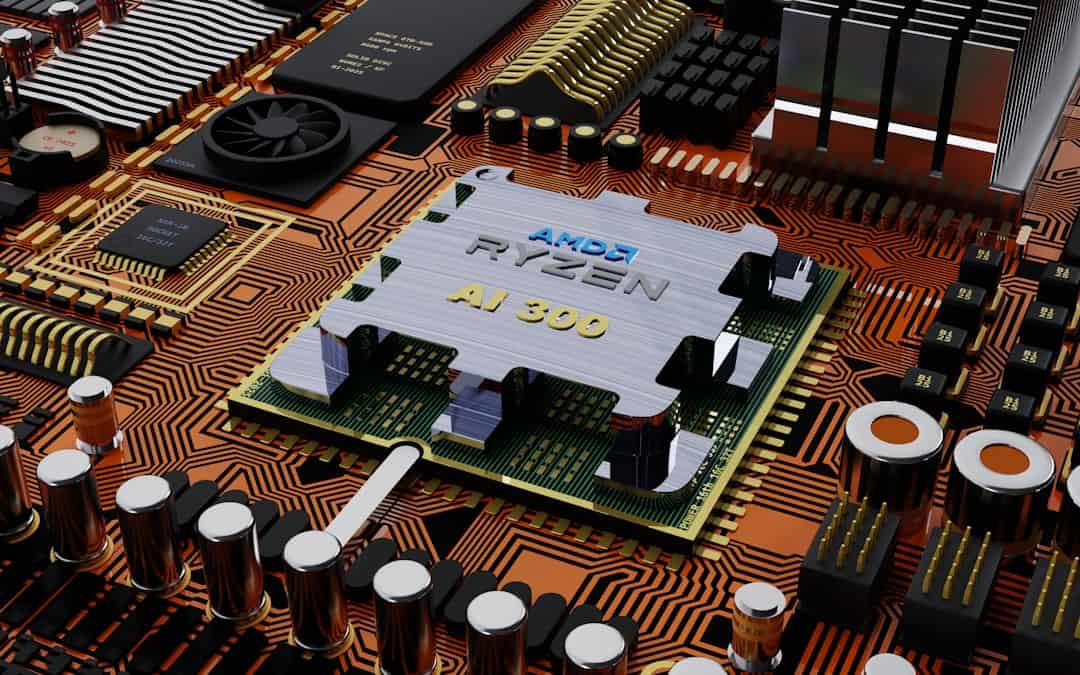Deep learning is a branch of artificial intelligence that utilizes complex algorithms to enable machines to learn from data. These algorithms are inspired by the structure and function of the human brain, allowing machines to process information in a similar manner. Deep Learning systems excel at identifying patterns and extracting features from large datasets, making them powerful tools for various applications.
The foundation of deep learning systems is neural networks, which consist of interconnected nodes that collaborate to analyze and process data. These networks are trained on extensive labeled datasets, enabling them to learn and enhance their performance over time. As a result, deep learning systems can perform tasks such as making predictions, recognizing speech, comprehending natural language, and making decisions based on intricate datasets.
Advancements in computing power and the availability of vast amounts of data have fueled the development of deep learning systems. These technologies have the potential to transform industries by automating tasks, enhancing decision-making processes, and enabling previously unattainable capabilities. Consequently, deep learning has become a crucial area of focus for many industries seeking to gain a competitive advantage and drive innovation.
Key Takeaways
- Deep learning systems are a subset of artificial intelligence that use neural networks to mimic the human brain and process large amounts of data to make decisions.
- Deep learning has had a significant impact on various industries such as healthcare, finance, retail, and manufacturing, by improving efficiency, accuracy, and decision-making processes.
- Implementing deep learning in industries can lead to advantages such as automation of repetitive tasks, predictive analytics, personalized customer experiences, and improved product quality.
- Case studies of successful implementations of deep learning systems include the use of image recognition in healthcare, fraud detection in finance, and demand forecasting in retail.
- Challenges and limitations of deep learning in industries include the need for large amounts of data, high computational power, interpretability of results, and ethical considerations.
- The future of deep learning in revolutionizing industries involves advancements in natural language processing, reinforcement learning, and the integration of AI to enhance deep learning systems.
- AI plays a crucial role in advancing deep learning systems in industries by enabling the development of more sophisticated algorithms, improving data processing capabilities, and enhancing decision-making processes.
The Impact of Deep Learning on Various Industries
Healthcare Advancements
In the healthcare industry, deep learning systems are being utilized to analyze medical images, diagnose diseases, and develop personalized treatment plans. This has the potential to improve patient outcomes and reduce healthcare costs by enabling more accurate and efficient diagnosis and treatment.
Financial Innovations
In the finance sector, deep learning systems are being employed to detect fraud, predict market trends, and automate trading processes. This has the potential to improve the security and efficiency of financial transactions, as well as enable more accurate and timely investment decisions.
Industrial and Transportation Transformations
In manufacturing, deep learning systems are being used to optimize production processes, predict equipment failures, and improve quality control. This has the potential to reduce downtime, improve product quality, and increase overall efficiency. In transportation, deep learning systems are being used to develop autonomous vehicles, optimize traffic flow, and improve logistics operations. This has the potential to reduce accidents, alleviate traffic congestion, and enable more efficient transportation of goods and people.
Overall, the impact of deep learning on various industries has been transformative, enabling new capabilities and driving innovation across a wide range of applications.
Advantages of Implementing Deep Learning in Industries

There are several advantages to implementing deep learning in industries. One of the key advantages is the ability of deep learning systems to automate tasks that were previously time-consuming or impossible for humans to perform. This can lead to significant cost savings and efficiency improvements, as well as enable new capabilities that were previously unattainable.
Another advantage of implementing deep learning in industries is the ability of these systems to make predictions and decisions based on complex data sets. This can enable more accurate and timely decision-making processes, as well as improve the overall quality of products and services. Additionally, deep learning systems have the potential to uncover insights and patterns within data that were previously unknown, leading to new opportunities for innovation and improvement.
Furthermore, deep learning systems have the ability to continuously learn and improve their performance over time. This means that as more data becomes available and as the system is exposed to new scenarios, it can adapt and become more accurate and effective. This adaptability is a key advantage of deep learning systems, as it enables them to stay relevant and effective in dynamic environments.
Case Studies of Successful Implementations of Deep Learning Systems
| Case Study | Industry | Deep Learning System | Metrics |
|---|---|---|---|
| AlphaGo | Technology | DeepMind | Defeated world champion Go player |
| Amazon Alexa | Consumer Electronics | Amazon | Natural language processing accuracy |
| Netflix Recommendation System | Entertainment | Netflix | Improved user engagement and retention |
| Deep Learning in Healthcare | Healthcare | Various | Improved disease diagnosis accuracy |
There are numerous case studies of successful implementations of deep learning systems across various industries. In healthcare, researchers at Stanford University developed a deep learning algorithm that can diagnose skin cancer with a level of accuracy comparable to dermatologists. This has the potential to improve access to diagnosis and treatment for patients in underserved areas, as well as enable more timely and accurate diagnosis.
In finance, companies like JP Morgan Chase have implemented deep learning systems to detect fraudulent transactions with greater accuracy than traditional methods. This has the potential to reduce financial losses due to fraud and improve the overall security of financial transactions. In manufacturing, companies like General Electric have implemented deep learning systems to predict equipment failures and optimize production processes.
This has the potential to reduce downtime, improve product quality, and increase overall efficiency. In transportation, companies like Tesla have implemented deep learning systems in their autonomous vehicles to enable them to navigate complex environments with a high level of accuracy. This has the potential to revolutionize transportation by reducing accidents and enabling more efficient movement of goods and people.
Overall, these case studies demonstrate the wide-ranging impact of successful implementations of deep learning systems across various industries.
Challenges and Limitations of Deep Learning in Industries
Despite the numerous advantages of implementing deep learning in industries, there are also several challenges and limitations that need to be addressed. One of the key challenges is the need for large amounts of labeled data to train deep learning systems effectively. This can be a barrier for industries with limited access to such data or where labeling data is time-consuming or expensive.
Another challenge is the interpretability of deep learning systems, as they often operate as “black boxes” that make it difficult for humans to understand how they arrive at their decisions. This can be a barrier for industries where transparency and accountability are important, such as healthcare and finance. Additionally, there are concerns about bias in deep learning systems, as they can inadvertently perpetuate existing biases present in the training data.
Furthermore, there are limitations in the ability of deep learning systems to generalize beyond the specific data they were trained on. This means that they may struggle to adapt to new scenarios or unexpected inputs, which can limit their effectiveness in dynamic environments. Additionally, there are challenges related to the computational resources required to train and deploy deep learning systems at scale, which can be a barrier for industries with limited computing infrastructure.
Future of Deep Learning in Revolutionizing Industries

The future of deep learning in revolutionizing industries is incredibly promising, with ongoing advancements in technology and research driving new capabilities and applications. One key area of focus is improving the interpretability of deep learning systems, enabling humans to understand how these systems arrive at their decisions. This will be critical for industries where transparency and accountability are important, such as healthcare and finance.
Another area of focus is addressing bias in deep learning systems by developing methods to detect and mitigate biases in training data. This will be important for ensuring that these systems make fair and equitable decisions across diverse populations. Additionally, ongoing research is focused on improving the ability of deep learning systems to generalize beyond specific training data, enabling them to adapt to new scenarios and inputs more effectively.
Furthermore, advancements in computing power and infrastructure are enabling the deployment of deep learning systems at scale across industries. This will enable more widespread adoption of these systems and drive new capabilities and efficiencies across a wide range of applications. Overall, the future of deep learning in revolutionizing industries is bright, with ongoing advancements driving new opportunities for innovation and improvement.
The Role of AI in Advancing Deep Learning Systems in Industries
The role of AI in advancing deep learning systems in industries is critical, with ongoing research and development driving new capabilities and applications. One key area of focus is developing AI algorithms that can automate the training and optimization of deep learning systems, enabling more efficient development and deployment across industries. This will be critical for enabling more widespread adoption of these systems and driving new opportunities for innovation.
Another area of focus is developing AI algorithms that can enable more effective collaboration between humans and deep learning systems. This will be important for addressing challenges related to interpretability and bias in these systems, as well as enabling more seamless integration into existing workflows and processes. Additionally, ongoing research is focused on developing AI algorithms that can enable more efficient deployment of deep learning systems at scale across industries.
Furthermore, advancements in AI are driving new opportunities for integrating deep learning with other AI techniques, such as reinforcement learning and natural language processing. This will enable more powerful and versatile applications across industries, driving new capabilities and efficiencies. Overall, the role of AI in advancing deep learning systems in industries is critical for driving ongoing advancements and opportunities for innovation.
If you’re interested in deep learning systems, you may also want to check out this article on blockchain technology and its potential impact on virtual economies and digital assets. Understanding how blockchain technology can be integrated with deep learning systems could provide valuable insights into the future of virtual ecosystems and digital economies.
FAQs
What is a deep learning system?
A deep learning system is a type of artificial intelligence (AI) that uses algorithms to model and understand complex data. It is based on the structure and function of the human brain, known as artificial neural networks, and is capable of learning from large amounts of labeled data.
How does a deep learning system work?
A deep learning system works by using multiple layers of interconnected nodes, known as neurons, to process and learn from data. These layers allow the system to automatically discover and learn features from the input data, making it capable of performing tasks such as image and speech recognition, natural language processing, and more.
What are the applications of deep learning systems?
Deep learning systems have a wide range of applications, including but not limited to image and speech recognition, natural language processing, autonomous vehicles, healthcare diagnostics, financial fraud detection, and recommendation systems.
What are the advantages of using deep learning systems?
Some advantages of using deep learning systems include their ability to automatically learn and adapt to new data, their capability to handle large and complex datasets, their potential for high accuracy and performance in various tasks, and their ability to automate and optimize processes.
What are the limitations of deep learning systems?
Some limitations of deep learning systems include their need for large amounts of labeled data for training, their computational complexity and resource requirements, their potential for overfitting to the training data, and their lack of transparency and interpretability in decision-making processes.











Leave a Reply